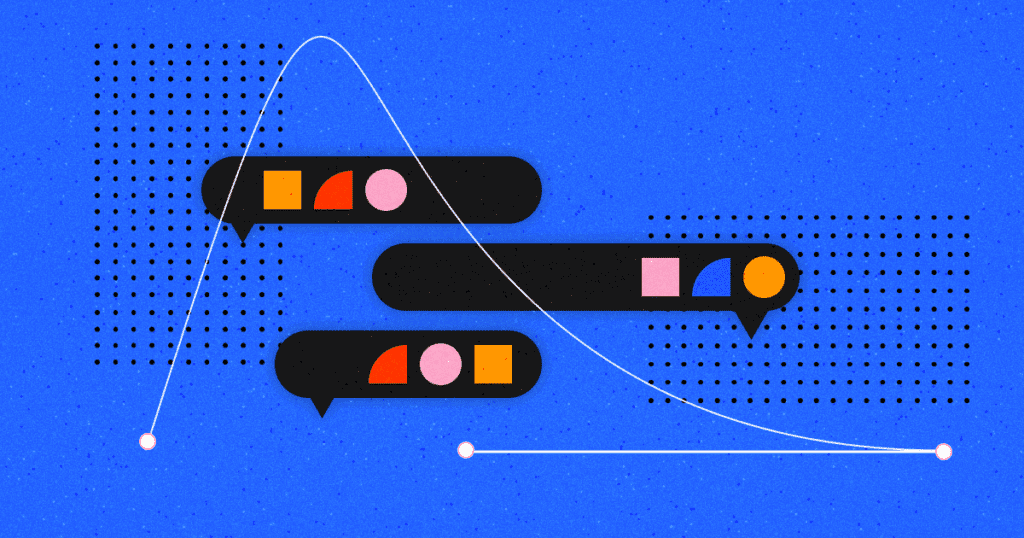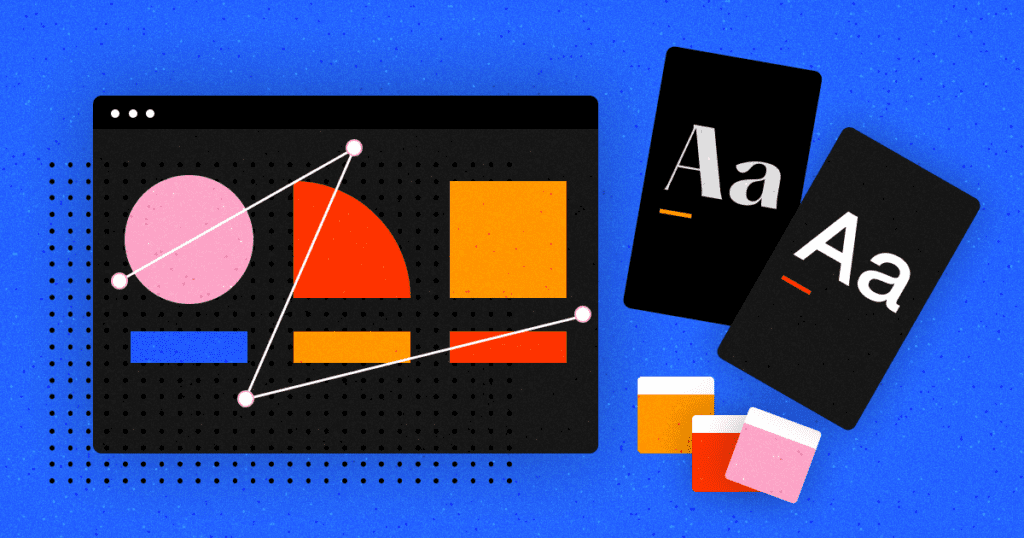Design systems are unique in that they’re not just defined by what they do, but also by how they help companies solve problems. Creating effective systems begins first and foremost with understanding this—meaning, having a sense of what they are, and what their purpose is.
Of course, this robust product covers enough ground that you could, in theory, encounter several definitions that speak (correctly) to what it is. But in the simplest sense, a design system is a collection of processes that allows teams to combine UI components in order to bring digital products to life. It determines the direction of a brand’s overall digital experience, which includes how that brand looks and feels across all channels.
Because it’s a tool that applies across a company, it serves as a point of reference as well as a summary of brand elements. And it consists of several components that can be combined in certain ways—similar to the way that Lego bricks can be used for a vast range of designs. While the smaller components are all distinctive, they can be used and combined in a variety of ways to accomplish bigger design goals.
Who Needs Design Systems?
Creating an effective design system begins with knowing just what makes it necessary— especially to your organization specifically. There are some companies that may not need something as comprehensive as a design system. That could be because they’re smaller, or their product system is less extensive; either way, it’s important that they’re cognizant of how demanding they can be, in terms of resources and management. Rather than build a system simply for the sake of having one, such companies should consider whether a different approach or tool—like a pattern library or style guide—would be enough to meet their needs.

Given that you’re here reading this, of course, this probably doesn’t apply to your company—and you do, in fact, need to invest in a system that covers your brand’s needs. Beyond that, you know one of these products can expedite your product development process, and you’re at a level of design maturity that aligns with that. Having this awareness means you can clarify how a design system will help your company meet its goals, and figure out how to build one that works for you.
This is especially important because so many people across teams utilize design systems in the long run. A good one will be used by business people and developers as much as it is by designers. So you want to be certain you fully invest in creating one that’s far-reaching enough to be effective.
See how Isadora Agency works with businesses to achieve coherence across customer interactions while uniting teams around business objectives. Download our Digital Transformation: Product Design presentation.
How to Build an Effectively
Let’s start off with the fact that there is, in truth, no singular way to build a design system. That’s another reason why being conscious of your organization’s goals is so important. Having those goals in mind will ultimately guide you toward a design system that is truly helpful to your team and brand. Ask yourself how you can use a design system to solve the problems you’re actually facing, and you’ll be on the right track.
Of course, all of that said, there are some general guidelines and best practices that are helpful to this process.
- Take inventory before you build. Auditing your current front-end design elements will give you a sense of where any current inconsistencies lie, and help you to build a stronger library of components, which will be the basis for your design system.
- Create a library of common elements. Once you’ve gathered the patterns, components, and elements that will be used in the design system, make sure they are easy to reference. This will help you streamline design efforts in the future.
- Document guidelines on how to use design elements. The information you’ve gathered truly becomes a design system when there are instructions for how to use your components and visual elements. This also makes it easier for teams to work more efficiently and quickly with the design system.
- Iterate and add to the library as needed. A good design system is not a static product—it should be ever-evolving. So it’s crucial to make changes to it as your team grows and changes, too, so you can continue to build high-quality digital products.

Benefits
Given the nature of a design system, the process of creating one can present challenges. For example, they are time-intensive and demanding in terms of organizing team members and maintaining documentation. But their benefits tend to outweigh such challenges. Consider a few of these key benefits:
- Scalability. These systems are capable of replicating designs quickly and at scale. Teams are able to use the same elements repeatedly, without starting from zero and risking inconsistency. Which leads to…
- Consistency. Visual consistency across channels and departments becomes possible when teams utilize design systems. Because there’s a single source for components, patterns, and styles, designs are ultimately more cohesive, which is also a huge boon to your brand.
- Easier collaboration. Having a shared visual language is massively beneficial to cross-functional collaboration. Because certain elements are already defined, there is also a time-saving benefit: since team members have a mutual understanding of what those elements are, there is a very low risk of miscommunication.
It’s clear that creating an effective design system, while not necessarily an easy task, is a step that can be a massive catalyst for your company. It can mean alleviating strain on designers, developers, and project managers so they’re free to focus on larger, more complex problems—and it can boost brand cohesion and recognition, both internally and externally. Maybe your efforts could even lead your team to create an exemplary design system like Polaris by Shopify. That’s the beauty of a product like this—it’s an example of how solving one problem can lead to unexpectedly valuable innovations.
